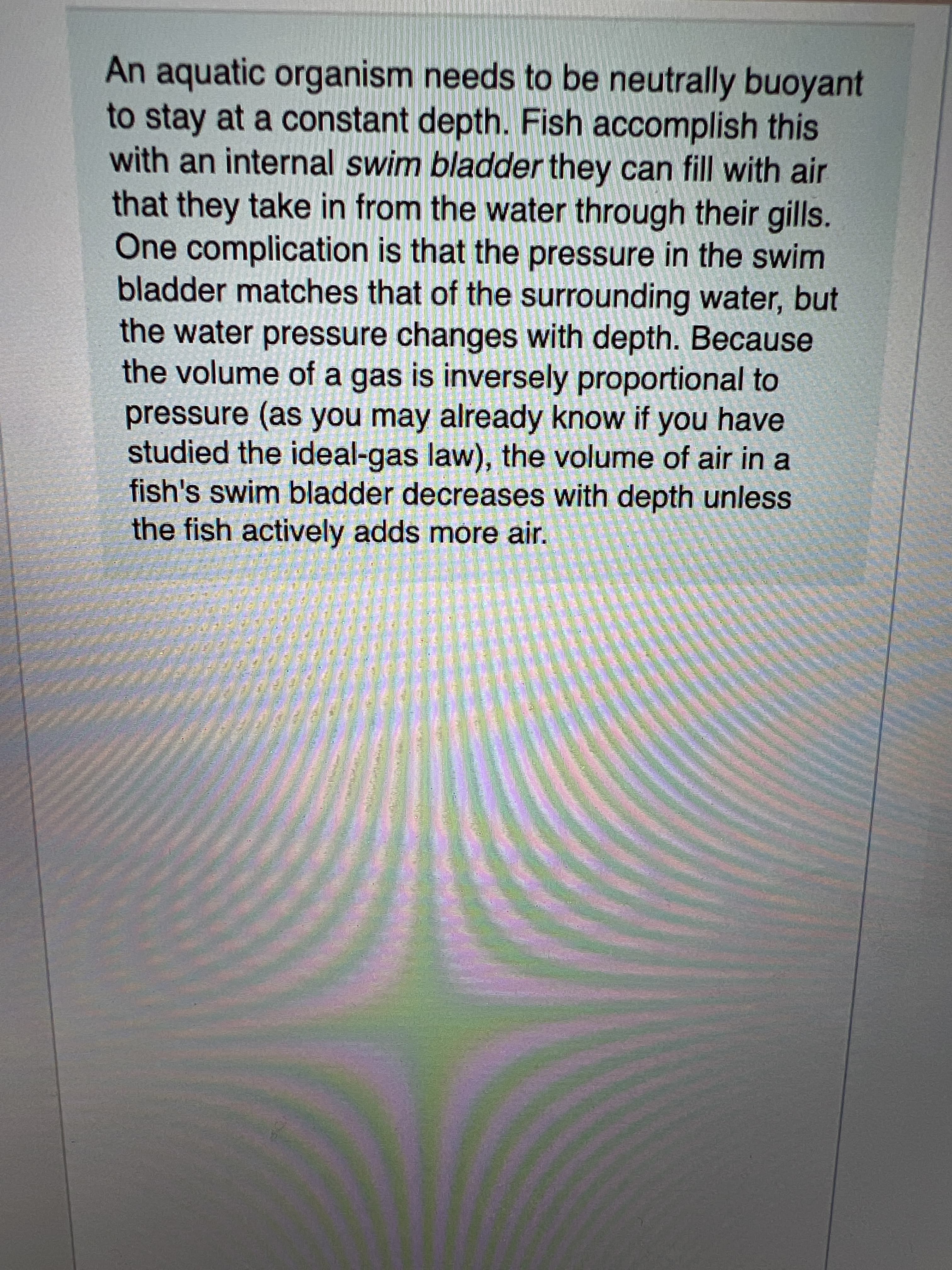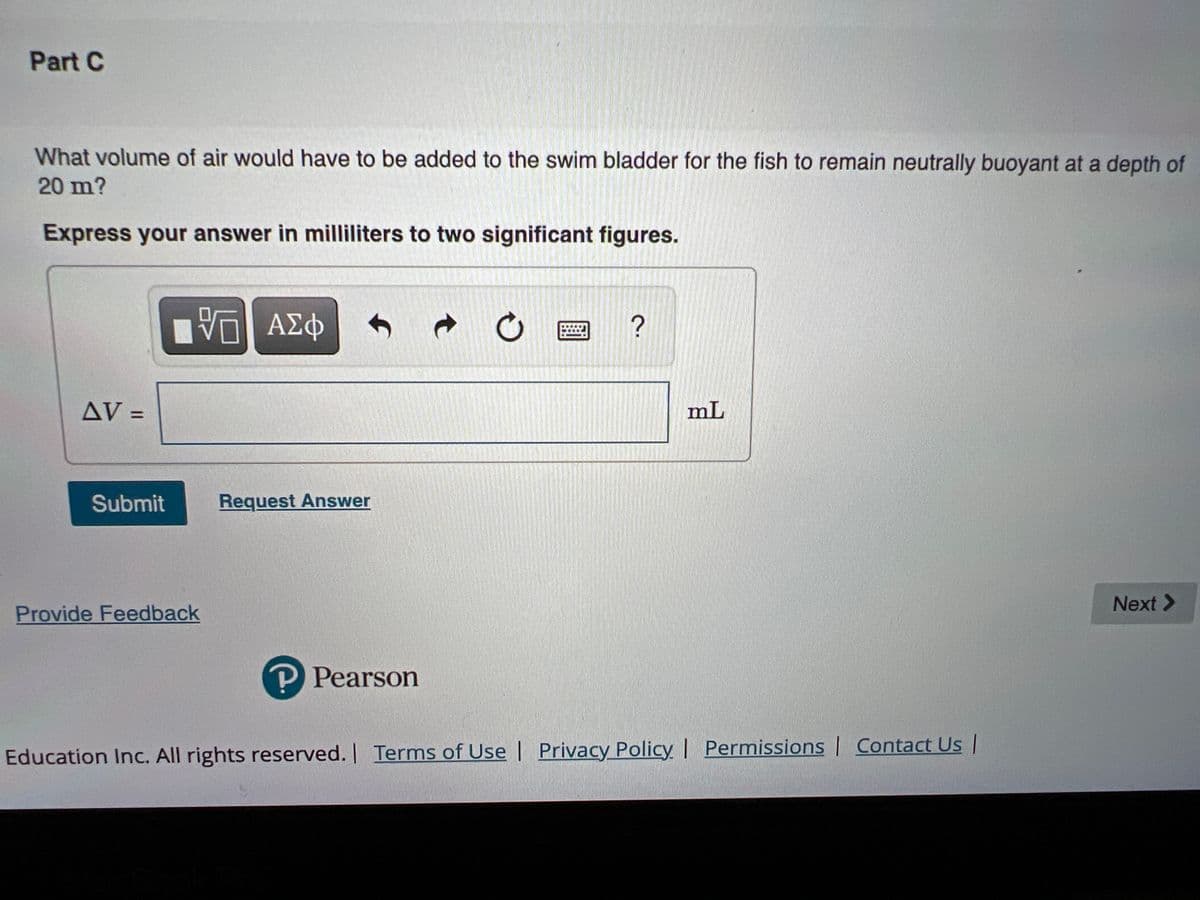An aquatic organism needs to be neutrally buoyant to stay at a constant depth. Fish accomplish this with an internal swim bladder they can fill with air that they take in from the water through their gills. One complication is that the pressure in the swim bladder matches that of the surrounding water, but the water pressure changes with depth. Because the volume of a gas is inversely proportional to pressure (as you may already know if you have studied the ideal-gas law), the volume of air in a fish's swim bladder decreases with depth unless the fish actively adds more air. Part C What volume of air would have to be added to the swim bladder for the fish to remain neutrally buoyant at a depth of 20 m? Express your answer in milliliters to two significant figures. ΑΣφ ? AV = mL %3D Submit Request Answer Next > Provide Feedback P Pearson Education Inc. All rights reserved. Terms of Use | Privacy Policy | Permissions | Contact Us |
Fluid Pressure
The term fluid pressure is coined as, the measurement of the force per unit area of a given surface of a closed container. It is a branch of physics that helps to study the properties of fluid under various conditions of force.
Gauge Pressure
Pressure is the physical force acting per unit area on a body; the applied force is perpendicular to the surface of the object per unit area. The air around us at sea level exerts a pressure (atmospheric pressure) of about 14.7 psi but this doesn’t seem to bother anyone as the bodily fluids are constantly pushing outwards with the same force but if one swims down into the ocean a few feet below the surface one can notice the difference, there is increased pressure on the eardrum, this is due to an increase in hydrostatic pressure.


Step by step
Solved in 2 steps with 2 images








